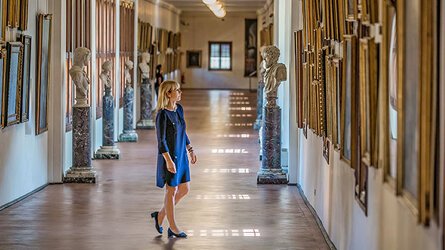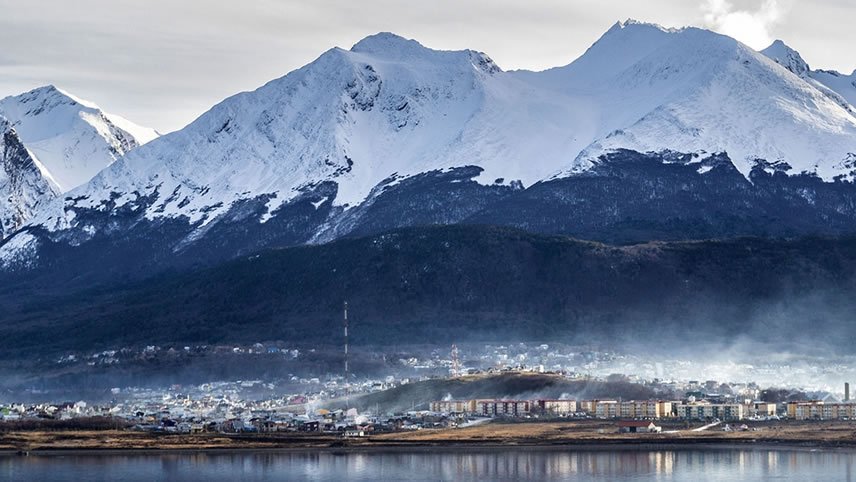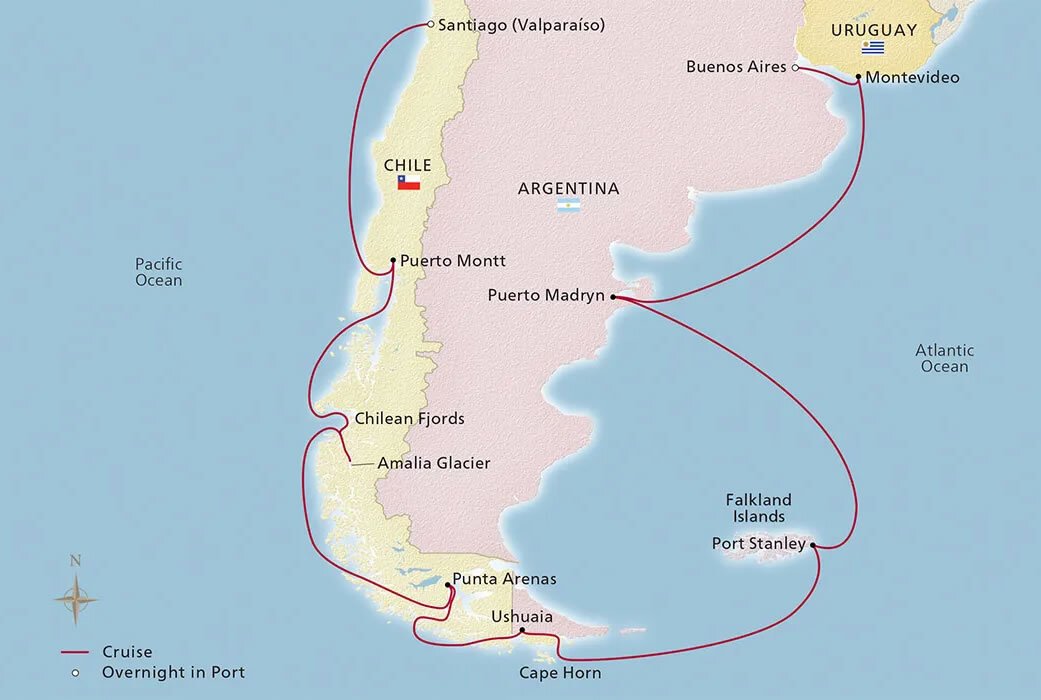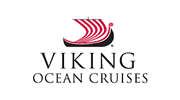Overview
Itinerary
Embark your ship and settle into your stateroom. Buenos Aires, Argentina's cosmopolitan capital, is an eclectic combination of Latin and European influences. The tree-lined streets and postcolonial architecture draw on the city's Spanish, French and Italian heritage, while the many cafés and bodegas and vibrant nightlife are decidedly Argentine. Its barrios, or neighborhoods, exude an intimate atmosphere that belies the city's size. Full of bohemian flair, historic San Telmo's cobblestone streets and Belle Époque–style buildings reverberate with the mesmerizing melodies of the tango.
Buenos Aires boasts one of the liveliest cultural scenes in the world. The stately Kirchner Cultural Center, the largest of its kind in Latin America, and the internationally renowned Colón Theater host some of the world's most highly recognized symphony orchestras. The National Museum of Fine Arts houses an impressive collection of works by European impressionists, while the Museum of Latin American Art focuses on 20th- and 21st-century Latino artists. Buenos Aires is also home to hundreds of bookstores and libraries, affording it the nickname “City of Books.”
Montevideo enjoys a scenic setting on the Plata River. The Portuguese were the first to settle here, seeking a strategic advantage near open ocean. But Spain, already having established Buenos Aires nearby, expelled them in 1724. This was the beginning of the golden era of Montevideo's Ciudad Vieja, or Old City: Within its walls, some of the most impressive colonial-era buildings were built, from the parliamentary Legislative Council building to the stunning Montevideo Metropolitan Cathedral. The wall has long since disappeared, but the character of old Montevideo remains.
Sail the Atlantic Ocean, divided in half, north to south, by the Mid-Atlantic Ridge. Longer than the Rockies, the Himalayas and the Andes combined, this underwater mountain range is the longest on Earth. Enjoy the amenities of your ship as you sail. Perhaps take a breath of fresh air on a brisk walk around the Promenade or begin your day with a workout in the well-equipped Fitness Center.
Puerto Madryn is Argentina's second-largest fishing port. In the mid-19th century, the Argentine government encouraged European emigration to remote Patagonian territories. But the heritage of the original immigrants lives on in the region's distinctive windmills and chapels. Several towns have retained their Welsh names; Puerto Madryn was named for the estate of Sir Love Jones-Parry, one of the colony's founders. Today, the city is the gateway to the scenic Peninsula Valdés, an important nature reserve and UNESCO World Heritage Site.
Sail legendary waters, where medieval Europeans believed “there be dragons” beyond the ocean's horizon. Renew your body, mind and spirit in our Scandinavian-inspired Spa, a Nordic sanctuary of holistic wellness, today while at sea. Whether you unwind in the Sauna, refresh in the Snow Grotto or take a dip in the Thermal Pool, you will feel recharged and revitalized.
The Falkland Islands are a British Overseas Territory comprising almost 800 small islands. Visitors to the main island of East Falkland, from curious travelers to expedition ship crews en route to Antarctica, experience British warmth in Port Stanley's pubs and at the charming Victorian stone church. Remarkably, there are about 200 sheep for every person in this starkly beautiful archipelago, yet the Falklands are also known for their biological diversity. Five penguin species call the islands home, from the king penguins to the gentoo, and the Magellanic on farther shores.
The nutrient-rich waters of the Atlantic Ocean are home to more than half of the world's fisheries, annually providing millions of tons of fish and other marine species for human consumption and industrial purposes. As you sail today, relax in the Explorers' Lounge, inspired by epic journeys of discovery. Marvel at the views through the two-story panoramic windows as you share a cocktail with friends, or settle down to read a book.
Rising above the point where the Atlantic and Pacific Oceans converge, Cape Horn, named for the Dutch city of Hoorn in The Netherlands, is part of the Hermite Islands archipelago. This remote, stark and treeless place is often considered the continent's southernmost point. Soaring from Hornos Island is an enormous prehistoric-looking massif of Jurassic volcanic rock. Atop, stands its historic lighthouse near the water's edge. A beacon of assurance and safety for countless sailors since 1991, it is the world's southernmost traditional-style lighthouse.
Ushuaia is the southernmost city in the world. Its splendid setting, tucked between the Beagle Channel and the southernmost slopes of the Andes, lends it an outpost atmosphere, as do the Antarctic explorers readying for the expeditions that depart from here. Ushuaia is the capital of and gateway to the celebrated Tierra del Fuego, the “Land of Fire,” named by Spaniards upon seeing the constant flames burned by the indigenous Yámana to keep warm. This largely unspoiled region comprises the large island of Tierra del Fuego and countless Chilean and Argentine islands.
Punta Arenas was founded as a penal colony by Chile in 1848. Nestled amid spectacular mountain vistas on the eastern shores of the Brunswick Peninsula, it played host to mariners crossing the continent by ship. Europeans followed, searching for newly discovered gold and establishing vast swaths of sheep farms locally and throughout the surrounding region. Over time, Punta Arenas became one of Chile's most important ports as, before the opening of the Panama Canal, it laid on the northernmost transcontinental shipping route.
The Amalia Glacier, part of Bernardo O'Higgins National Park, is a marvel of nature. This massive glacier skirts the northern rise of the Reclus volcano located behind it, slowly eroding the hulking mound's slopes. Amalia's ice floe journeyed here millennia ago from the heights of the Andes—a fractional segment of one of the world's largest continuous ice fields, the Southern Patagonian Ice Field. In the vicinity, Andean condors and cormorants soar above, and marine otters reside in the waters below.
A pristine paradise of soaring peaks, countless lush islands teeming with wildlife and a tapestry of glaciers and rivers spilling into shimmering waters, the fjords of Chile are heralded as one of the most rugged and untamed places on earth. The crystal waters are a breathtaking sight as they journey through vast ice fields, towering mountainsides and serene fishing villages that hug tranquil shores against backdrops of dramatic forested hills.
Puerto Montt is considered the capital of the nation's Northern Patagonia province. The city was founded in 1853 after government-sponsored immigration brought Germans here to populate and develop the remote region. By 1912, a train linked Puerto Montt to Santiago, opening up trade and transport with larger cities. Beyond this cultural center, Chile's second-largest lake, Llanquihue Lake, is watched over by the snowcapped volcanoes Osorno and Calbuco. On the lake's shores, villages boast endless delights, magnificent gardens and charming architecture from Old Europe.
Sail Mar Pacífico, meaning “peaceful sea,” dubbed by Ferdinand Magellan when he crossed these waters almost 500 years ago. As you sail today, savor a range of international cuisine on board. Choose from a variety of international flavors at the World Café, enjoy al fresco dining on the Aquavit Terrace, or regional specialties in The Restaurant.
Chile's modern capital of Santiago is one of the largest cities in the Americas. Its impressive neoclassical, neo-Gothic, art deco and other architecture spans several centuries. Santiago's gateway, Valparaíso, is often compared to San Francisco for its many cerros, or hills. The city prospered as a major port until the opening of the Panama Canal rendered it unnecessary. Quaint Victorian-era architecture recalling its 19th-century affluence and steeply sloped barrios are linked by ascensores, or funiculars, and winding byways. From Los Cerros, the views are spectacular.
Valparaíso is the gateway to Santiago, Chile's scenically set capital boasting a rich repository of historic architecture. Fashioned in 1910 after the Petit Palais of Paris, the impressive Palace of Fine Arts houses Santiago's celebrated National Museum of Fine Arts. Palacio de la Moneda, a neoclassical gem, was built as a mint during Chile's early days. Meanwhile, the city's theater, Teatro Municipal, with its graceful arcades and Corinthian columns, hosts Chile's ballet, opera and symphony, which enthrall concertgoers as much as their home's elegant facade does. After breakfast, disembark your ship and journey home.
Life Onboard Viking Jupiter

Launched in 2019, the Viking Jupiter is Vikings' newest all-veranda ship, part of a fleet of award winning, state of the art ships incorporating all the comforts & luxuries you would expect from Viking. Read more

Viking are destination experts. With no casinos or children on board, you can be assured that the focus is firmly on enrichment and education. Read more

After a day of exploration or just to enhance the relaxation of a day at sea, the on-board Spa will leave you feeling recharged and revitalized. Read more

Viking offer eight on board dining options. Beer, wine and soft drinks are available with lunch and dinner at no additional charge of fee. Read more

Viking proudly includes all that you need and nothing you do not. A variety of features and services valued at $200 per person per day are standard inclusions in your cruise. Read more

Viking include one complimentary shore excursion in every port of call. Enjoy exclusive entry to cultural treasures and seldom-seen collections around the world. Read more

Trip Reviews (4) Most Recent 'South America & the Chilean Fjords' Reviews
Our 18-day Viking Cruise was good value for the price, but we had a few disappointments too. The itinerary already included quite a few sea days, but we ended up with even more than scheduled. We were unable to land at the Falkland Islands due to weather (wind and choppy seas), a huge disappointment as this was one of the main reasons we had chosen this cruise. Port Stanley has to be landed by ship’s tender, and we suspect that, had we been an expedition ship with fewer mobility limited passengers, that landing would have been feasible. Additionally, we had to return to Ushuaia 4 hours after departure to offload a medical emergency, meaning that we arrived in Punta Arenas too late in the day to go ashore and do any excursions. As a result, this cruise ended up with far too many sea days for our liking.
Having said that, the ship itself was beautiful, the 4 guest lecturers were knowledgeable and fascinating, the entertainment was excellent, the dining was delicious, and the staff were absolutely fabulous. Viking is certainly a company that prides itself on faultless service and they definitely delivered on that. The photo I am including is of the Perito Morino Glacier which we saw on our pre-cruise trip to Patagonia.
The optional excursions in each port were a little disappointing, not a lot to see ...read more or do in some of the ports and we had to use tender boats in most of the ports which was quite annoying. All in all though, a very good cruise, would definitely recommend doing a Viking cruise. Yvonne from Global Journeys organised our tour, she did a great job.
Brochure

Viking River, Ocean & Expedition Voyages (2025-27)
Availability
 USD
Port charges, taxes and fees included.
USD
Port charges, taxes and fees included.
Tour & cruises prices are per person. Prices shown have savings applied, are subject to availability and may be withdrawn at any time without notice. Pricing and trip details are correct at this point in time, however are subject to confirmation at the time of booking and are subject to change by Viking. For cruise itineraries, cabin images are sourced from Viking. These should be treated as indicative only. Cabin inclusions, upholsteries and room layout may differ to the image(s) shown depending on the ship selected and your sailing dates.









